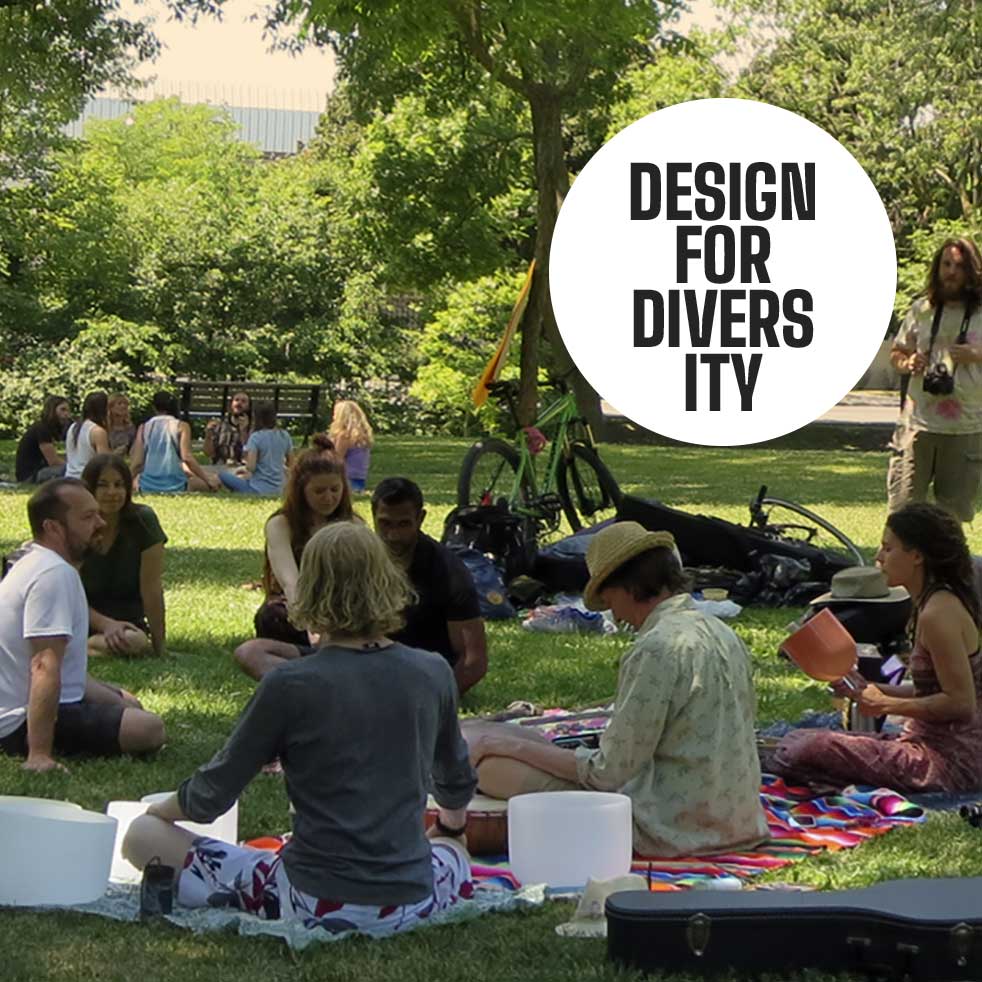
Design for
Diversity: Why
Does It Matter?
by OpenCity Projects
Photo: Michi McCloskey
We hope that our work encourages planners and city-lovers to use a more thoughtful approach to creating spaces that promote a sense of belonging and inclusion
Public spaces are essential to healthy cities and are a perfect place to explore what we call Design for Diversity. Public spaces are important catalysts for intercultural connection as places that everyone can access and use based on their individual needs. In our research, we found that once people have a sense of belonging they are more likely to interact with others and take ownership of a space. If we design with the intention of making public spaces more inclusive, bringing people together through shared experiences like a meal or a game of pick-up soccer, there is an opportunity to build bridges between communities.
Traditional urban planning tends to focus on the macro built environment and not specific tactics to help foster integration between people of different cultural backgrounds. From a global perspective, Toronto has been forward-thinking in its approach to integration and has embraced its tremendous diversity. Nearly 50% of Toronto residents are born in other countries and the city’s motto is “Diversity is our Strength.” People of diverse cultural backgrounds still face systemic issues here and in many other cities but, on the whole, Toronto has been successful in welcoming newcomers and celebrating their contributions to the city at large.
To understand how to Design for Diversity, we looked for vibrant public spaces in Toronto where different groups of people mix and interact despite typical barriers like culture, income and language. We chose six sites for our review including an animated district and a community center in the downtown core, a library and a park located west of downtown as well as a park and a mall in the city’s northeast side. These places were not originally designed with diversity in mind but evolved organically to become inclusive places. They are not Toronto’s most refined or recognized destinations but we found that these six public spaces exemplify design that fosters intercultural connections.
Inclusion and diversity can deal with many issues ranging from immigration and settlement policy to accessibility. Our work specifically focuses on public space design as it relates to culturally diversity. We carried out site visits, conducted over 20 interviews with site organizers and visitors from a range of ages and cultural backgrounds and submitted our work for peer-review to a panel of diversity and design experts. Based on our findings, we developed a set of guiding principles to help others Design for Diversity. We hope that our work encourages planners and city-lovers to use a more thoughtful approach to creating spaces that promote a sense of belonging and inclusion. Diversity isn’t just our strength in Toronto, it can be a point of inspiration for cities around the world.